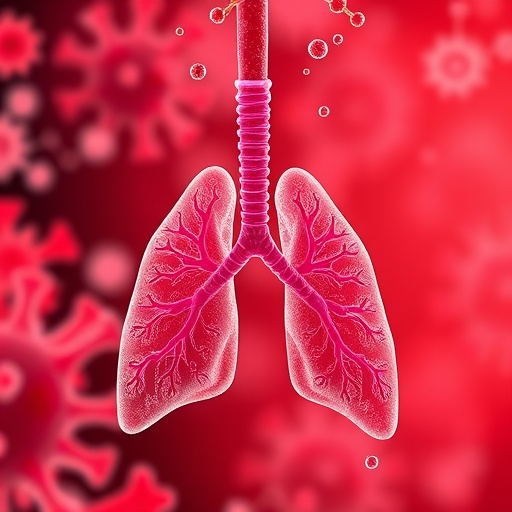One in five cardiovascular deaths in the EU, preventable by improving the environment – European Environment Agency (EEA)

Report on Environmental Determinants of Cardiovascular Disease in the European Union and Alignment with Sustainable Development Goals
A European Environment Agency (EEA) briefing indicates that preventable environmental factors are responsible for approximately one in five deaths from cardiovascular disease (CVD) in the European Union. This report analyses these findings, highlighting the significant public health burden and its direct correlation with the United Nations’ Sustainable Development Goals (SDGs), particularly SDG 3 (Good Health and Well-being).
The Scale of the Public Health Challenge
Cardiovascular disease represents the primary cause of mortality in the EU, with significant economic and social costs. Addressing this issue is crucial for progress on SDG 3, which aims to ensure healthy lives and promote well-being for all at all ages.
- Mortality Rate: Over 1.7 million deaths were attributed to CVD in 2022, constituting one-third of all deaths.
- Environmental Contribution: At least 18% of these deaths are linked to modifiable environmental risk factors.
- Incidence and Cost: Over 6 million new CVD cases are diagnosed annually, costing the European economy approximately EUR 282 billion.
Environmental Risk Factors and Their Link to Sustainable Development Goals
The EEA identifies several key environmental drivers of cardiovascular disease. Mitigating these factors is essential for achieving multiple SDGs, creating a synergistic effect on public health and environmental sustainability.
Air Pollution, Climate Change, and Urban Health
Air pollution and climate-related stressors are primary contributors to CVD, directly impacting several SDGs:
- SDG 3 (Good Health and Well-being): Poor air quality is a leading cause of non-communicable diseases. Target 3.9 specifically aims to reduce deaths from air pollution.
- SDG 11 (Sustainable Cities and Communities): Urban air pollution and transport noise are major challenges. Addressing them contributes to Target 11.6, which seeks to reduce the adverse environmental impact of cities.
- SDG 13 (Climate Action): Extreme temperatures and weather events, which exacerbate cardiovascular conditions, are a direct consequence of climate change. Building resilience aligns with Target 13.1.
Chemical Exposure and Environmental Management
Exposure to toxic substances, including heavy metals and endocrine-disrupting chemicals, poses a significant risk to cardiovascular health. This issue is central to the following goals:
- SDG 3 (Good Health and Well-being): Reducing exposure to hazardous chemicals is critical for preventing illness and death, as outlined in Target 3.9.
- SDG 12 (Responsible Consumption and Production): Enforcing regulations on cardiotoxic substances supports Target 12.4, which calls for the environmentally sound management of chemicals and waste.
Policy Recommendations for an Integrated Health and Environment Strategy
The report outlines a series of policy interventions that can reduce environmental cardiovascular risks while simultaneously advancing the 2030 Agenda for Sustainable Development. The forthcoming EU cardiovascular health plan provides a key opportunity to integrate these measures.
- Strengthen Air Quality Legislation: Fully implement policies like the Ambient Air Quality Directive to align with WHO recommendations. This action directly supports SDG 3 and SDG 11.
- Enforce Chemical Safety Regulations: Accelerate the phase-out of cardiotoxic substances and promote safer alternatives, contributing to SDG 3 and SDG 12.
- Enhance Climate Resilience in Health Systems: Develop early warning systems and targeted support for vulnerable groups to mitigate the impacts of climate change on cardiovascular health, in line with SDG 13.
- Promote Nature-Based Solutions: Invest in urban green and blue spaces to improve air quality, reduce noise, and encourage physical activity. This strategy advances SDG 3, SDG 11, and SDG 15 (Life on Land).
- Adopt a ‘One Health’ Approach: Integrate human, animal, and ecosystem health policies to achieve broader benefits, reflecting the interconnectedness of the SDGs.
- Increase Public Awareness and Education: Inform citizens about environmental health risks to promote lifestyle changes and build support for sustainability policies, contributing to SDG 3 and SDG 4 (Quality Education).
Analysis of Sustainable Development Goals in the Article
1. Which SDGs are addressed or connected to the issues highlighted in the article?
-
SDG 3: Good Health and Well-being
The article’s central theme is the impact of environmental factors on cardiovascular disease, which is a major health issue. It directly discusses mortality rates (“over 1.7 million people died from it in 2022”), the causes of disease (air pollution, chemicals), and preventative measures, all of which are core components of SDG 3.
-
SDG 11: Sustainable Cities and Communities
The article highlights urban environmental issues such as air pollution and transport noise as key contributors to cardiovascular disease. It also proposes solutions like “urban greening, parks, green corridors and blue spaces” to improve air quality and reduce noise, directly aligning with the goals of creating sustainable and healthy urban environments.
-
SDG 12: Responsible Consumption and Production
The article mentions “chemical exposure to toxic substances (including heavy metals and endocrine-disrupting chemicals)” as a cause of cardiovascular deaths. The recommendation to enforce “chemical regulations, accelerating the phase-out of cardiotoxic substances and promoting safer alternatives” connects directly to the sustainable management and safe use of chemicals.
-
SDG 13: Climate Action
The article identifies “extreme temperatures and extreme weather events” as environmental factors contributing to cardiovascular disease. It suggests preparing health systems for “climatic impacts” through early warning systems and heat-health action plans, which is a key aspect of building resilience and adapting to climate change.
2. What specific targets under those SDGs can be identified based on the article’s content?
-
SDG 3: Good Health and Well-being
- Target 3.4: By 2030, reduce by one third premature mortality from non-communicable diseases through prevention and treatment and promote mental health and well-being. The article focuses on preventing cardiovascular disease, a primary non-communicable disease, which caused “one third of all deaths” in the EU in 2022.
- Target 3.9: By 2030, substantially reduce the number of deaths and illnesses from hazardous chemicals and air, water and soil pollution and contamination. The article explicitly states that environmental factors like “air pollution” and “exposure to harmful chemicals” cause “around one in five cardiovascular deaths.”
-
SDG 11: Sustainable Cities and Communities
- Target 11.6: By 2030, reduce the adverse per capita environmental impact of cities, including by paying special attention to air quality and municipal and other waste management. The article discusses the EU’s goal of “reducing premature deaths attributable to air pollution” and the importance of the “Ambient Air Quality Directive.”
- Target 11.7: By 2030, provide universal access to safe, inclusive and accessible, green and public spaces, in particular for women and children, older persons and persons with disabilities. The article recommends “urban greening, parks, green corridors and blue spaces” as a nature-based solution to reduce cardiovascular risk.
-
SDG 12: Responsible Consumption and Production
- Target 12.4: By 2030, achieve the environmentally sound management of chemicals and all wastes throughout their life cycle, in accordance with agreed international frameworks, and significantly reduce their release to air, water and soil in order to minimize their adverse impacts on human health and the environment. This is supported by the article’s call for “enforcing chemical regulations” and accelerating the “phase-out of cardiotoxic substances.”
-
SDG 13: Climate Action
- Target 13.1: Strengthen resilience and adaptive capacity to climate-related hazards and natural disasters in all countries. The article links “extreme temperatures and extreme weather events” to cardiovascular health and recommends “preparing the health systems for climatic impacts through early warning systems” and “heat-health action plans.”
3. Are there any indicators mentioned or implied in the article that can be used to measure progress towards the identified targets?
- Mortality Rate from Cardiovascular Disease: The article provides a clear metric: “over 1.7 million people died from it in 2022 — one third of all deaths that year.” This can be used to track progress for Target 3.4.
- Mortality Rate Attributable to Environmental Factors: The statistic that “around one in five cardiovascular deaths” are caused by environmental factors is a direct indicator for Target 3.9. The EU’s objective “of reducing premature deaths attributable to air pollution by more than 55%, until 2030” is another specific, measurable indicator.
- Air Quality Levels: The article implies the use of air quality measurement by referencing the “Ambient Air Quality Directive” and the goal of lowering pollution to “levels in line with WHO recommendations.” This relates to Target 11.6.
- Implementation of Chemical Regulations: Progress towards Target 12.4 can be measured by the “enforcing chemical regulations” and the “phase-out of cardiotoxic substances,” as mentioned in the article.
- Development of Climate Adaptation Plans: The recommendation to establish “early warning systems” and “heat-health action plans” serves as an indicator for measuring resilience and adaptive capacity for Target 13.1.
- Availability of Green Spaces: The promotion of “urban greening, parks, green corridors and blue spaces” implies that the area or accessibility of such spaces can be measured as an indicator for Target 11.7.
4. Summary Table of SDGs, Targets, and Indicators
| SDGs | Targets | Indicators Identified in the Article |
|---|---|---|
| SDG 3: Good Health and Well-being | 3.4: Reduce premature mortality from non-communicable diseases.
3.9: Reduce deaths and illnesses from hazardous chemicals and pollution. |
– Number of deaths from cardiovascular disease (1.7 million in 2022). – Percentage of cardiovascular deaths caused by environmental factors (one in five). – Reduction in premature deaths attributable to air pollution (target of 55% reduction by 2030). |
| SDG 11: Sustainable Cities and Communities | 11.6: Reduce the adverse per capita environmental impact of cities, focusing on air quality.
11.7: Provide universal access to green and public spaces. |
– Lowering pollution to levels in line with WHO recommendations. – Implementation of nature-based solutions like “urban greening, parks, green corridors and blue spaces.” |
| SDG 12: Responsible Consumption and Production | 12.4: Achieve environmentally sound management of chemicals. | – Enforcement of chemical regulations. – Progress on the “phase-out of cardiotoxic substances.” |
| SDG 13: Climate Action | 13.1: Strengthen resilience and adaptive capacity to climate-related hazards. | – Preparation of health systems for climatic impacts. – Implementation of “early warning systems” and “heat-health action plans.” |
Source: eea.europa.eu
What is Your Reaction?
 Like
0
Like
0
 Dislike
0
Dislike
0
 Love
0
Love
0
 Funny
0
Funny
0
 Angry
0
Angry
0
 Sad
0
Sad
0
 Wow
0
Wow
0




















































.jpg.webp?itok=0ZsAnae9#)
























